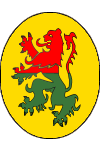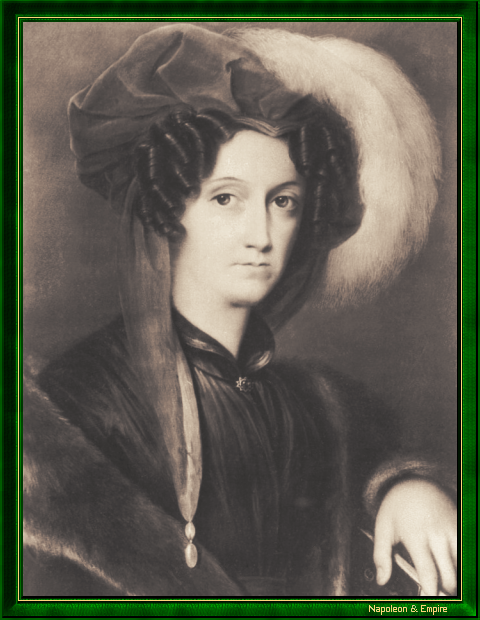Auguste Charlotte von Schönberg
Countess of Kielmannsegge
Pronunciation:

Auguste Charlotte von Schönberg was born on May 18, 1777 in Hermsdorf, Saxony (Germany).
Her family belonged to the Saxon nobility: her father was the palace marshal Peter August von Schönberg, and her mother Charlotte Dorothea, Countess von Hoym.
She spent his childhood at Hermsdorf Castle and in Dresden during the winter months. Around the age of ten, she was orphaned and entrusted to the care of a grandmother whose educational methods strengthened her character.
In 1796, she married Rochus August zu Lynar. But the marriage failed. It ended with the husband's death in 1800 (at the age of twenty-seven). After his death, around which there were rumors of poisoning, the widow inherited new estates, which, together with her own, made her one of the largest fortunes in Saxony.
She returned to Dresden, where she contracted a second marriage in October 1802, to Count Ferdinand Hans Ludolph von Kielmannsegge. The couple soon settled in Hanover, where the Count was originally from.
Count von Kielmannsegge was a fierce opponent of French influence in Germany. He became involved in various intrigues and conspiracies, including an attempt on the life of Jérôme Bonaparte, King of Westphalia. This behavior led to his arrest and imprisonment, and a rift with his wife, who, on the other hand, had shown the deepest admiration for France and Napoleon Bonaparte since a trip to Italy in 1797. The couple separated in 1809 (they divorced nine years later), and Auguste Charlotte de Schönberg returned to Dresden.
She spent little time there, however, and was in France before the end of the year. Napoleon honored her with a private audience, during which he granted her her husband's release. The Countess's circle of acquaintances included the then Minister of Police, Joseph Fouché, and his future successor, Anne Jean-Marie René Savary - who frequented her on the Emperor's orders - as well as the King and Queen of Westphalia.
But it was above all with the entourage of Charles-Maurice de Talleyrand-Périgord that the Countess made her mark. Her intelligence and social position made her a credible source of information on the intrigues of the former Minister of Foreign Affairs and his clan. She soon discovers their duplicity and, in 1811, took part in the dismantling of a Russian spy ring in Paris, dealing a fatal blow to her relationship with the Prince of Benevento.
Although she began to be mistrusted, as a worthy friend of the Emperor, the Countess remained a valuable intermediary between the courts of Paris and Saxony. In Saxony, where she spent part of her time, she also continued to act as an informer, passing on to Napoleon what she came to know of the intrigues between Talleyrand and Tsar Alexander I. Thus, in 1813, during the Saxony campaign, the Emperor received her on several occasions in the Brühl-Marcolini palace in Dresden.
During the same campaign, Marshal Nicolas Oudinot stayed at one of the Countess de Kielmannsegge's properties in Lubbenau. During this stay, a deep friendship developed between the Countess and the Marshal. The latter's departure to join the retreating French army after the battle of Leipzig marked the beginning of a difficult period in Auguste Charlotte de Schönberg's life.
Rejected by the Saxon nobility, the Countess was accused of treason and arrested. However, despite interrogations and searches of her estates, the compromising documents she was suspected of possessing were never found. She nonetheless campaigned for the return of the deposed Emperor from exile, perhaps even visiting him on Elba. Subsequently considered politically dangerous, she was relegated to one of her many estates, where she was subjected to close surveillance. She was also forbidden to communicate or meet with members of the Bonaparte family.
After learning of Napoleon's death, Auguste Charlotte de Schönberg went into mourning and never left his side. She converted to Catholicism in 1822, returned to Dresden in 1833 and in 1840 moved to the Wasserpalais in Pillnitz, which she transformed into a private memorial to Napoleon.
She died there on April 26, 1863, and is buried in Dresden's former Catholic cemetery.
Auguste Charlotte de Schönberg (1777-1863), 19th century painting.

The Countess was sometimes said to have had an illegitimate son by Napoleon. There is no proof of this.